Introduction
Navigating the turbulent waters of the construction industry requires not only skill and precision but also a keen eye for the early signs of distress. Construction businesses, like any other sector, can face significant challenges that threaten their operational stability and financial health. Recognizing these early warning signs is the first step toward a successful turnaround.
This article delves into the critical indicators of a construction business in need of intervention, explores comprehensive strategies for effective turnarounds, and presents real-world case studies that illustrate successful transformations. Additionally, it highlights the pivotal role of turnaround consultants, offers guidance on selecting the right consulting firm, and shares best practices learned from industry successes. By understanding and implementing these insights, construction firms can not only navigate through crises but also emerge stronger and more resilient.
Signs That a Construction Business May Need a Turnaround
Recognizing the signs of distress in a building enterprise is essential for prompt intervention and recovery. Key indicators include significant cash flow issues, frequent delays in work, rising overhead expenses, and declining workforce morale. Additionally, a backlog of unpaid invoices and low customer satisfaction ratings can signal deeper operational challenges. For example, the American Institute of Architects (AIA) recognizes that managing budgets and preparing for market movements are critical. If a building company like Gilbane Inc. encounters such issues, a thorough financial evaluation might uncover underachieving ventures or inefficiencies, leading to strategic choices to either terminate troublesome endeavors or discover ways to improve their profitability. Understanding and addressing these signs early can help steer the business back to stability.
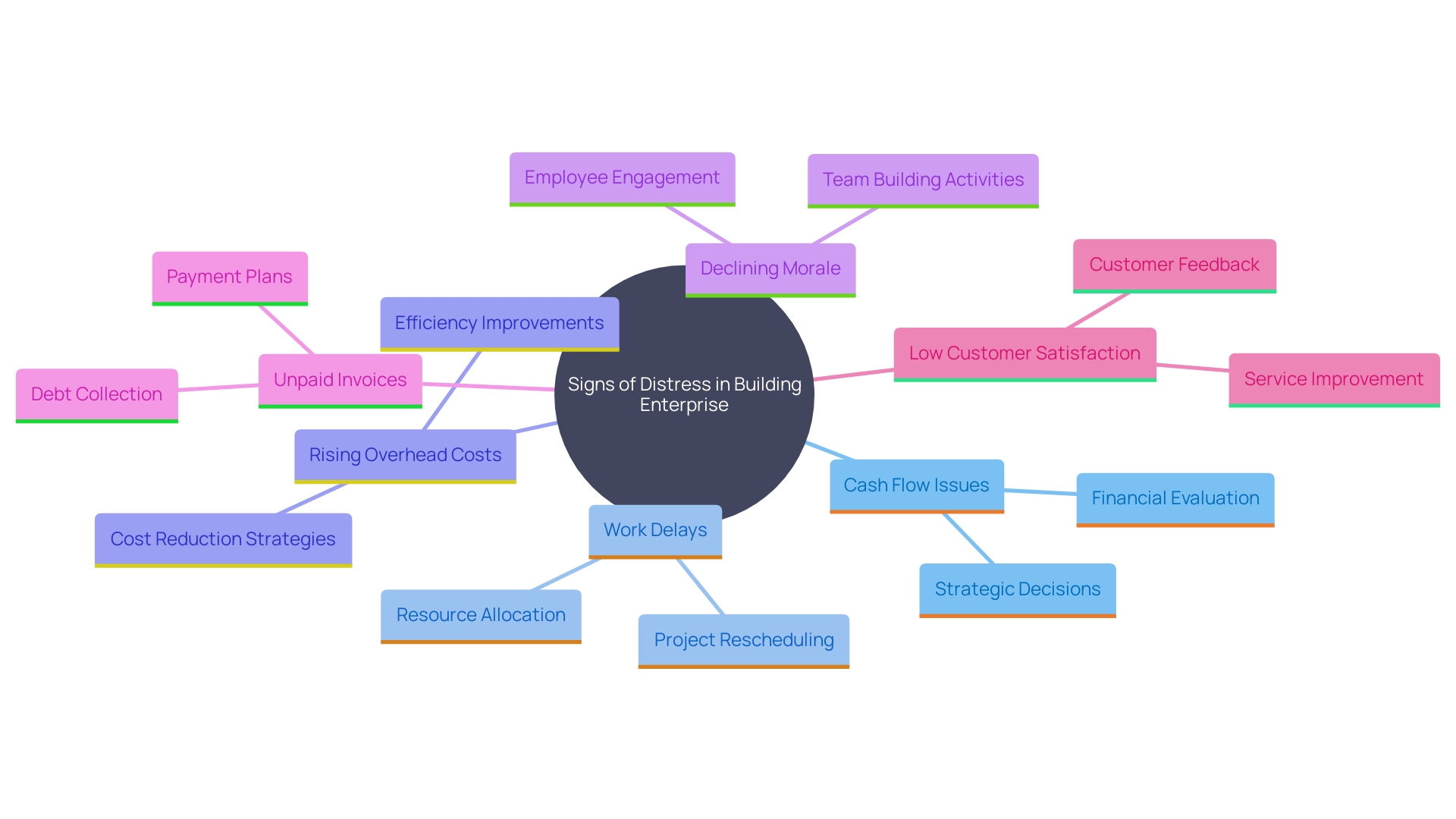
Key Strategies for Successful Construction Turnarounds
A successful construction turnaround requires a comprehensive, multi-faceted strategy. First, conducting a thorough financial audit is crucial, as it establishes an accurate baseline for financial health, much like understanding asset conditions before implementing maintenance plans. This foundational step ensures that resources are allocated effectively and issues are identified early, preventing redundant efforts and unexpected failures.
Re-assessing management procedures is another vital element. The evolution of management into a production system highlights the need for innovative approaches, as conventional methods may no longer suffice. Contemporary management of initiatives should concentrate on utilizing digital resources and teamwork platforms, such as Bluebeam, which has demonstrated great worth in personalizing and optimizing design evaluations.
Enhancing communication channels within the team is equally important. 'The digital transformation of the building sector, particularly in the invoicing and payments process, addresses long-standing issues like late payments.'. Faster, digital payment solutions can significantly improve cash flow and operational efficiency, benefiting all stakeholders involved.
Implementing rigorous cost control measures and renegotiating contracts with suppliers and subcontractors can provide immediate financial relief. Given that the federal government alone spends over $690 billion on contracts, optimizing these agreements can lead to substantial savings and improved financial stability.
Lastly, focusing on employee engagement and skill development is essential for restoring operational efficiency. Recognizing strengths, weaknesses, and skill deficiencies enables focused development initiatives, guaranteeing that the workforce is prepared to address the requirements of contemporary tasks. By providing relevant and engaging learning opportunities, companies can foster a more skilled and motivated team, driving long-term success.
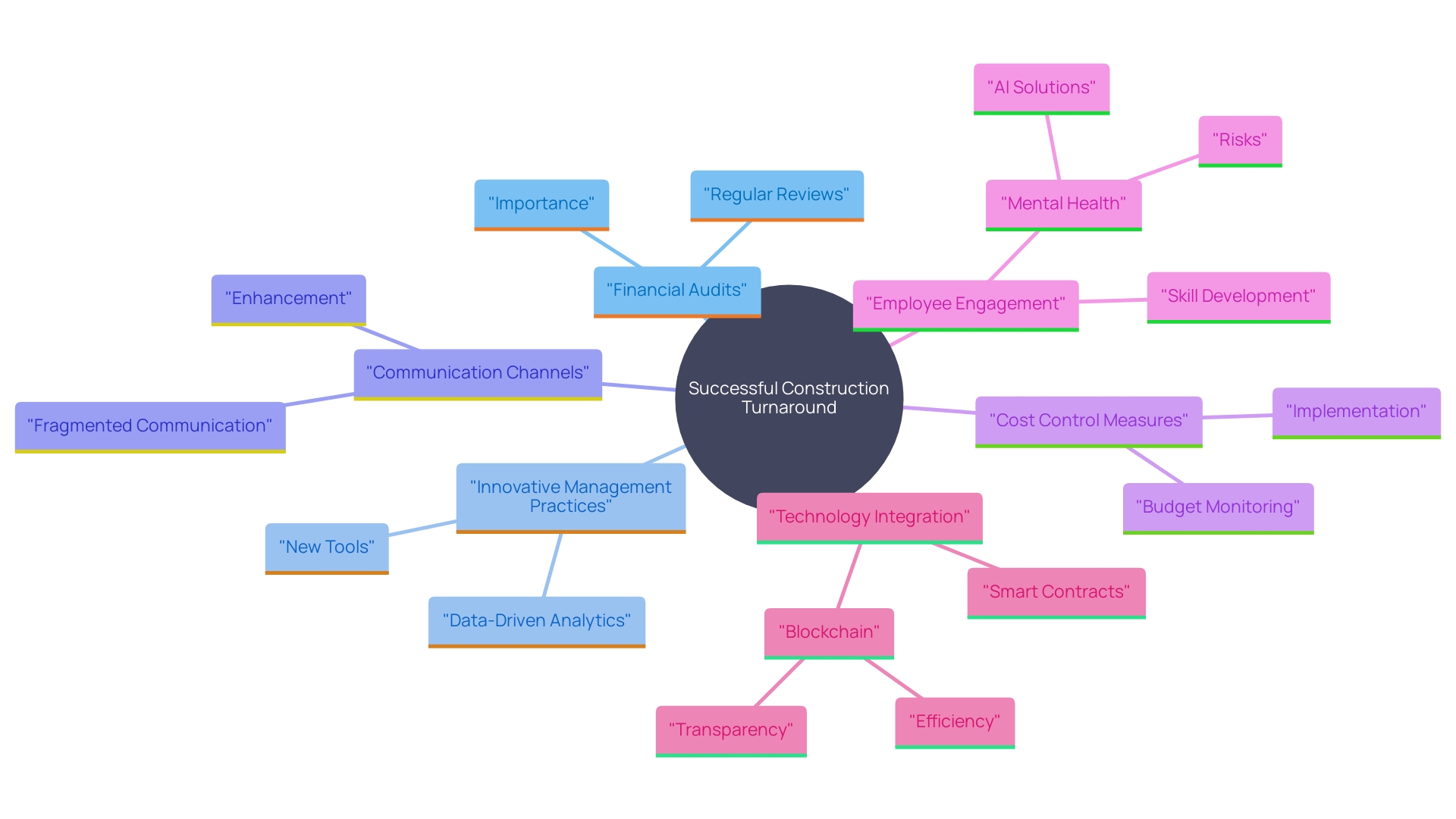
Case Study 1: Construction Project Turnaround Strategy
A mid-sized building company faced significant cost overruns and increasing client dissatisfaction. To tackle these challenges, the firm implemented a thorough turnaround strategy that started with a detailed evaluation of all ongoing initiatives. They recognized and prioritized high-impact initiatives that closely matched their core competencies, ensuring optimal resource allocation and focus.
The implementation of Agile management methodologies marked a significant shift in their operations. Agile, recognized for breaking down large tasks into manageable sprints, facilitated rapid iterations and welcomed changes even late in the lifecycle. This approach led to a remarkable 30% reduction in timelines for the initiative. The company's daily stand-up meetings ensured continuous collaboration between developers and business executives, enhancing accountability and fostering a culture of rapid problem-solving.
Furthermore, the company invested in sophisticated management software solutions, such as those provided by Procore Technologies. These tools provided a centralized system for tracking all project-related data, from schedules and cost information to contracts and invoices. This enhanced transparency and accountability, significantly improving client relations and satisfaction.
By changing their management strategy, the building company not only optimized workflows but also established a strong foundation for upcoming endeavors, guaranteeing sustainable growth and operational excellence.
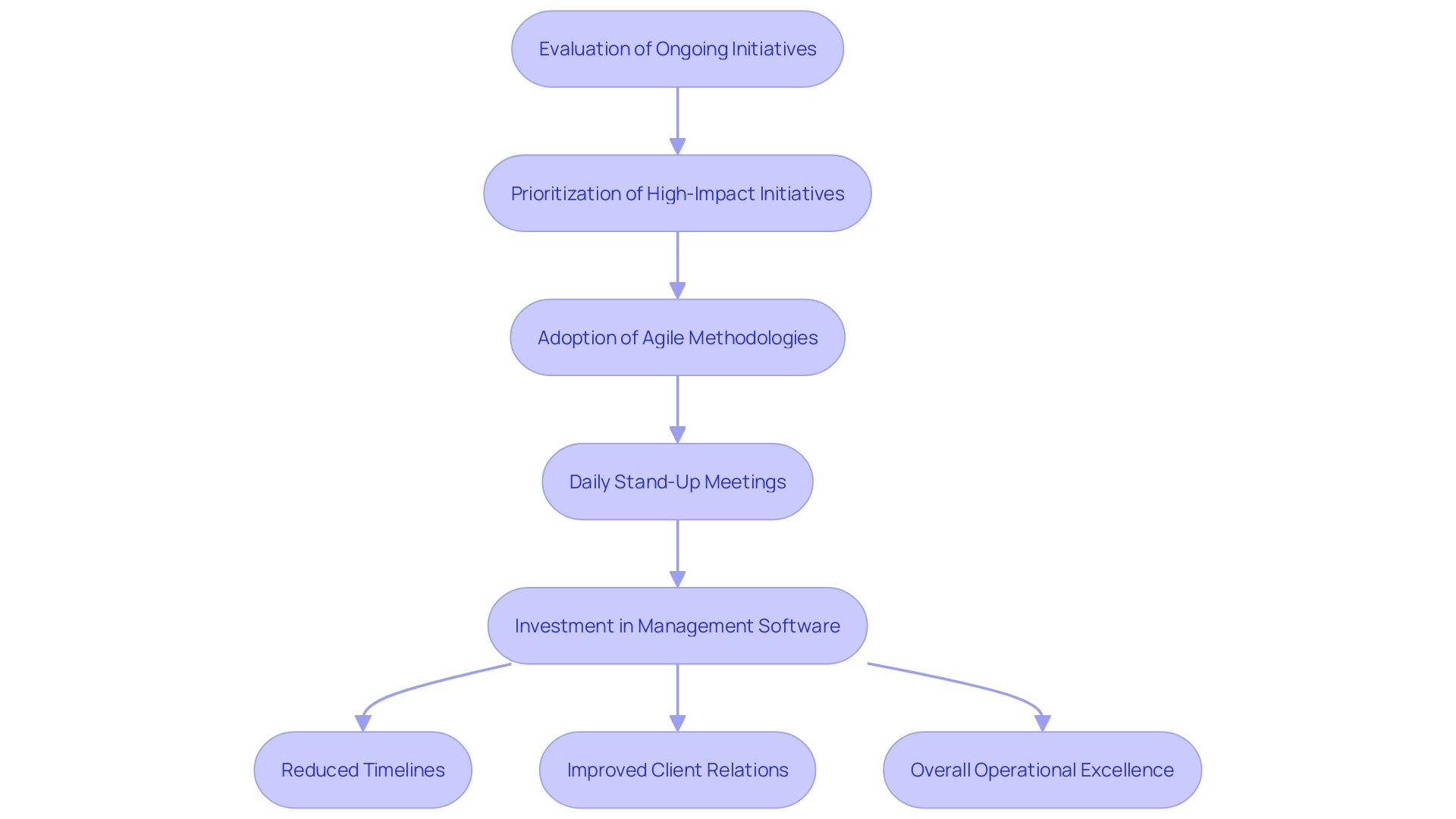
Case Study 2: Construction Business Turnaround Success Story
A prominent building company encountered significant financial difficulties because of poor choice of assignments and insufficient management methods. To address these issues, a consultant conducted an exhaustive evaluation of the project pipeline, identifying high-risk projects to be discontinued. Resources were strategically reallocated to more promising ventures, and a robust financial oversight system was put in place. As a result, the company managed to cut its debt by 40% within a year. To sustain these improvements, employee training programs were introduced, fostering a culture of accountability and innovation. This strategic restructuring not only stabilized the company's finances but also significantly boosted profitability.
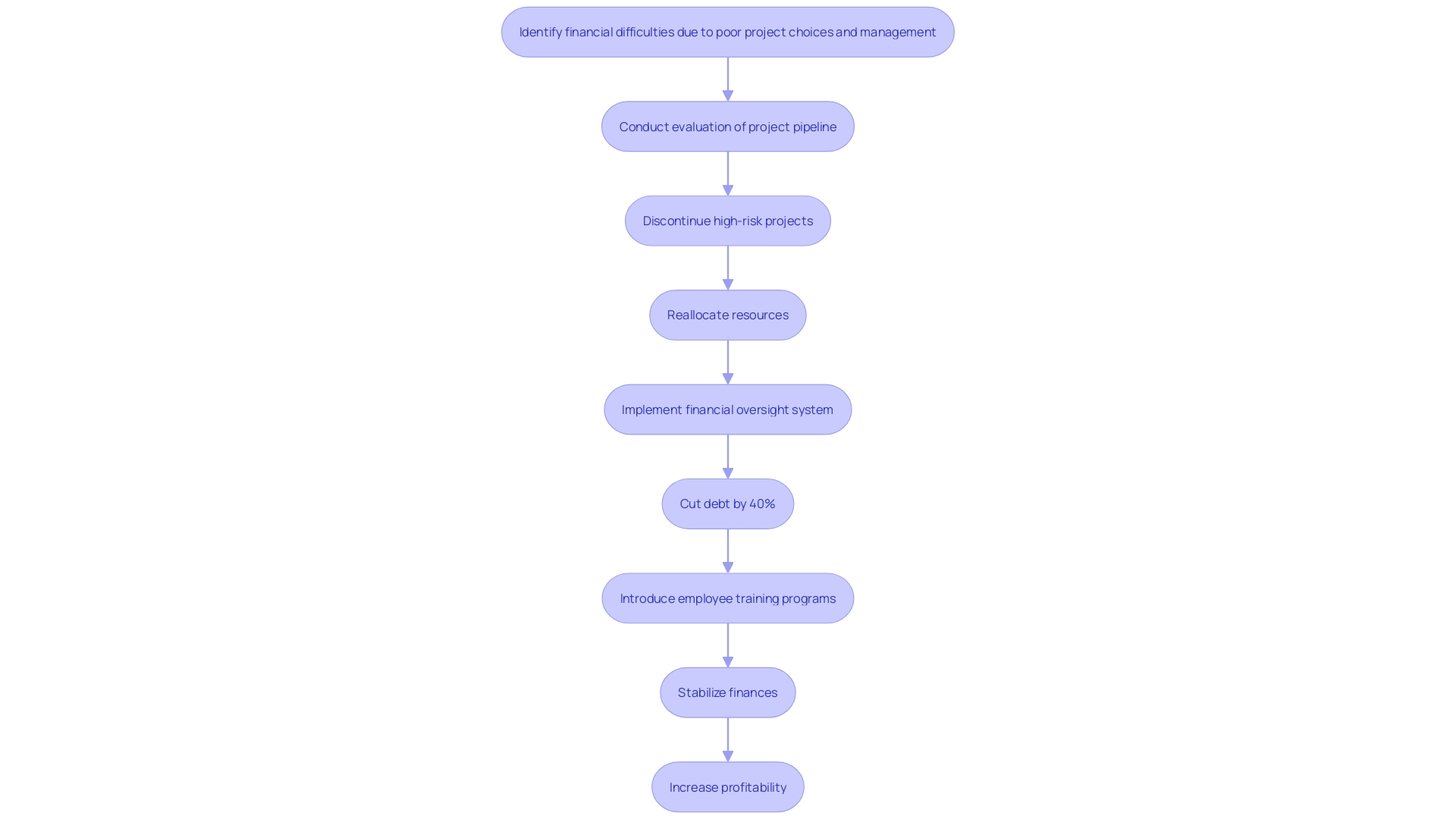
The Role of Turnaround Consultants in Construction Projects
Turnaround consultants are instrumental in steering distressed building enterprises back on track. Their proficiency in financial restructuring, operational assessment, and strategic planning allows companies to surmount intricate challenges. By bringing an impartial perspective and specialized expertise, these consultants help organizations pinpoint the underlying causes of failure and devise actionable improvement plans.
This approach is exemplified by the case of a major branded hotel that, despite its prime city-center location, struggled to boost its food and beverage sales. By leveraging strategic location insights and market knowledge, the consultants managed to drive a significant increase in sales within the first week. This case highlights the significance of comprehending market dynamics, which is essential for any recovery strategy.
Moreover, the construction industry faces mounting challenges with costs and efficiency. Projects like New York’s East Side Access and San Francisco’s Salesforce Tower have been hampered by extensive delays and soaring costs due to regulatory red tape and supply chain disruptions. Successful turnaround consultants are those who can adapt quickly and maintain focus amidst such chaos. Their ability to innovate and rethink initial plans, as seen in the redesign of One World Trade Center, which saved nearly $300 million, is vital for ensuring project success.
Statistics from a recent report highlight that financial performance improvement remains the most common type of engagement for consulting companies, with a 56% increase since 2020. Clients frequently seek operational evaluations to optimize revenue and reduce costs. This information highlights the essential function that recovery advisors perform in improving efficiency and performance, ultimately resulting in higher net revenue and lower expenses for building firms.
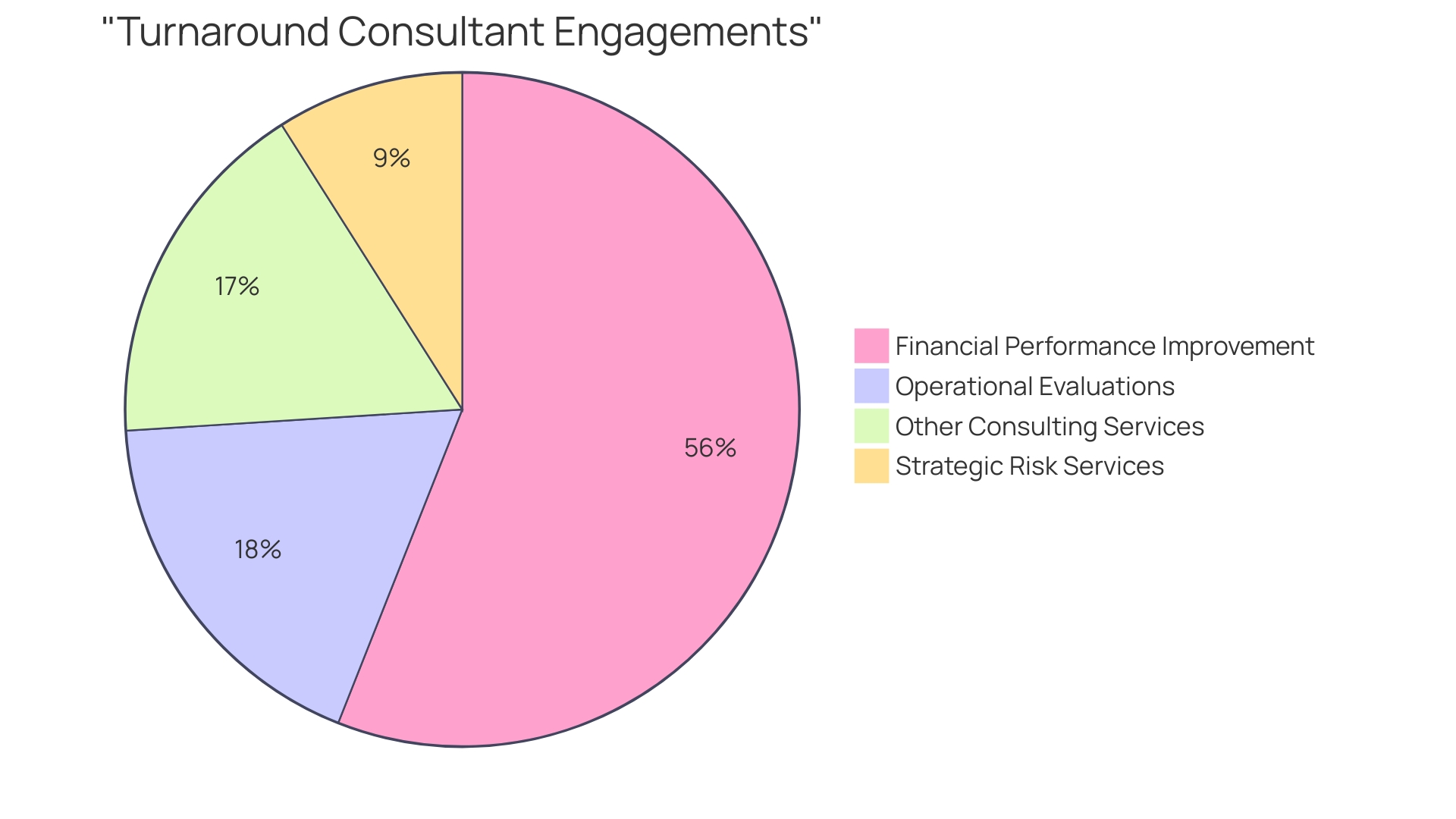
Choosing the Right Turnaround Consulting Firm for Construction Businesses
Choosing the appropriate turnaround consulting company is crucial for successful business and construction restructuring. The company's sector expertise and a demonstrated history with comparable assignments are essential elements. For instance, a consulting organization like Grant Thornton, which boasts a global network of over 60,000 professionals and extensive experience across various sectors, can provide invaluable insights and solutions.
Engaging a firm that understands construction-specific challenges can significantly influence the success of the endeavor. In the construction industry, unforeseen challenges are inevitable, and the ability to adapt is vital. Progressive design-build methods, which involve early contractor engagement and real-time collaboration through digital platforms, have demonstrated significant savings, such as nearly $300 million for a New York City skyscraper endeavor. This approach ensures structural integrity and aesthetic appeal while managing costs effectively.
Additionally, utilizing the knowledge of organizations such as Public Consulting Group, which manages approximately 1,000 contracts at any moment, can assist in optimizing procedures and guaranteeing adherence to federal and state regulations. Their extensive experience in management consulting and technology solutions can be particularly beneficial for complex building projects.
In essence, selecting a consulting agency with a thorough grasp of the building environment, established methods, and a robust history can result in customized solutions that correspond with the distinctive operational dynamics of the industry.
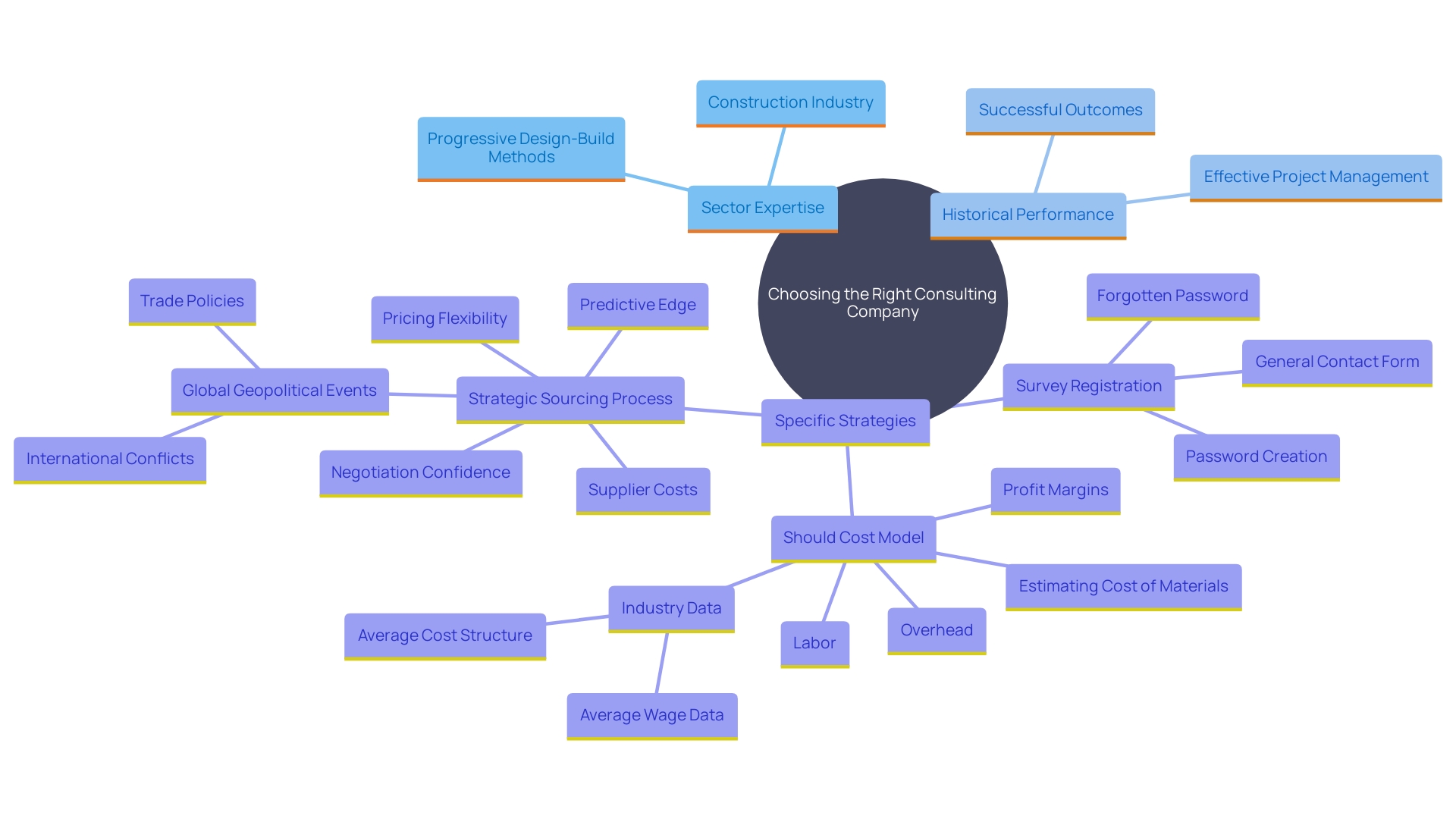
Best Practices for Implementing a Turnaround Strategy in Construction
Efficient execution of a recovery strategy necessitates a carefully designed action plan and resolute leadership. Establishing clear, measurable goals and timelines is crucial to building and maintaining momentum. For example, Gilbane Inc., one of the largest privately held family-owned real estate development and construction firms, utilizes the Architecture Billings Index (ABI) to manage budgets and prepare for market shifts, demonstrating the importance of structured planning.
Open and transparent communication among stakeholders is equally vital to ensure alignment with recovery objectives. John Young's multidisciplinary approach in revitalizing a major branded hotel’s restaurant by leveraging its location emphasizes the significance of stakeholder alignment and market understanding in executing a successful recovery.
Continuous monitoring and real-time adaptation of strategies significantly enhance the likelihood of success. The progressive design-build (PDB) method exemplifies this by promoting collaboration and iterative adjustments throughout a project's lifecycle, thereby reducing risks and optimizing outcomes. By integrating these principles, organizations can navigate the complexities of transformations more effectively, ensuring sustained progress and achieving set objectives.

Lessons Learned from Successful Construction Turnarounds
Successful construction turnarounds provide critical insights that can revolutionize the industry. Proactive risk management is paramount, as it addresses the root cause of 80% of workplace accidents, significantly reducing the potential for costly incidents. Regular financial assessments, as practiced by leading firms like Gilbane Inc., are essential for managing budgets and preparing for market shifts. Furthermore, promoting a culture of accountability cannot be emphasized enough; it guarantees every team member is dedicated to the success of the endeavor.
Engaging all levels of staff in the turnaround process is another vital strategy. This inclusive approach not only builds a sense of ownership but also enhances resilience within the organization. As the building sector evolves, leveraging insights from different project management eras, especially the New Era of Project Delivery, can offer innovative solutions to contemporary challenges. Embracing these lessons can lead to more resilient and adaptable construction operations, ready to face future demands.
Conclusion
Recognizing the signs of distress within a construction business is essential for timely intervention. Key indicators such as cash flow problems, project delays, and declining workforce morale can serve as red flags that necessitate immediate attention. By addressing these issues early, firms can effectively steer their operations back to stability and focus on sustainable growth.
Implementing a comprehensive turnaround strategy is crucial for success. This involves conducting thorough financial audits, re-evaluating project management processes, and enhancing communication across teams. Leveraging digital tools and innovative methodologies can streamline operations and improve efficiency.
Furthermore, prioritizing employee engagement and skill development ensures that the workforce is equipped to meet modern construction demands, driving long-term success.
Real-world case studies illustrate the transformative power of well-executed turnaround strategies. By strategically reallocating resources and adopting agile methodologies, construction firms have successfully reduced project timelines and enhanced client satisfaction. The role of turnaround consultants cannot be overstated; their expertise in operational assessment and strategic planning provides valuable insights that can lead to substantial improvements in financial performance.
Choosing the right consulting firm is another critical factor in the turnaround process. Firms with industry-specific experience and a proven track record can tailor solutions to address unique challenges in the construction sector. Best practices, such as establishing clear goals, fostering open communication, and continuously monitoring progress, further enhance the likelihood of success.
Ultimately, the lessons learned from successful construction turnarounds emphasize the importance of proactive risk management, accountability, and inclusive engagement. By embracing these principles, construction firms can navigate future challenges more effectively, emerging stronger and more resilient in an ever-evolving industry landscape.




